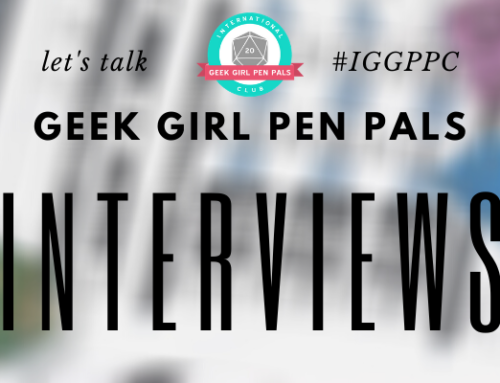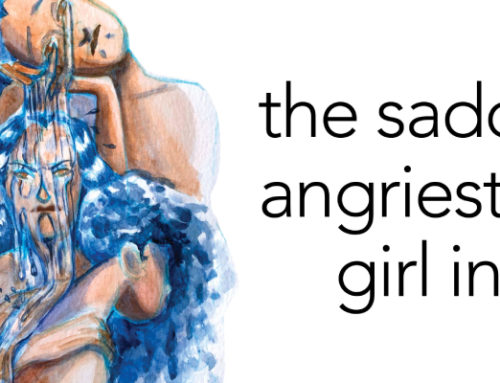Comic Book Bootcamp Day 5: Adaptations
What we’re reading…
I love reimagining classic tales. It’s so much fun seeing what pieces of the original is kept. Some adaptations are very by-the-book.
With comics, this is a great way to visualize what the story was about. Other adaptations take the original work and place it in an entirely new setting. That is the approach Peter Panzerfaust (2012) takes. Kurtis Wiebe and Tyler Jenkins take the familiar story of Peter Pan and place him right in the middle of World War II. The results are spectacular. This title was chosen as our main look at adaptations because of the freshness of the story while staying true to the themes of the original.
Before you read…
Let’s take a look…
Peter Panzerfaust is told through the memories of the French orphans he saved while in Calais during WWII. These Lost Boys, now grown, relay their tales of adventure to a man named Mr. Parsons. He then in turn pieces them together to learn more about the swashbuckling American soldier, Peter. The first orphan, Gilbert, reflects on the day that Peter showed up in his life.
As Calais was attacked by Nazi soldiers, Gilbert and his friends at a boys’ home were suddenly in danger. When all seemed lost, a dashing American arrives on the scene. Gilbert notes that Peter could not just simply be; the man knew how to make an entrance and how to make that entrance count the most. From the moment we meet him, we see Peter as the orphaned boys see him. He’s larger than life. He’s brave. He’s reckless. He is, as it will soon turn out to be, the man who steps in as their older brother.
The beginning of the first volume, The Great Escape, is just that. The boys, lead by Peter, must escape Calais or risk being killed by Germans. These boys had just lost everything they had, though what they had was not much. Their lives are completely turned upside down, and they are suddenly thrust into the war. These boys, sixteen at most, must fight to survive. Peter acts as their guide and leader, and this small pack of boys work to save their country and make sense of their new lives.
Along the way, of course, the Lost Boys and Peter run into the Darlings. They rush to a plane crash site and find a young woman and her two younger brothers. As Wendy emerges from the wreckage, the dynamics completely change in the series.
One major theme in Peter Pan is family and the presence of a mother. The Lost Boys of the original work did not have mothers, and Wendy was seen as their surrogate maternal figure. Much like Peter is immediately accepted as a brother figure in Peter Panzerfaust, Wendy is seen as a maternal figure. What makes the addition of Wendy even more interesting to this adaptation is the relationship she and Peter develop. There is no denying the draw Peter has to Wendy, and the two are seen comforting each other at times as well as flirting. The connection between Peter and Wendy gives the Lost Boys a sense of home.
Home is even more established during their time at the farmhouse. After the events of Calais, the Lost Boys, Peter, and the Darlings begin to form somewhat of a routine in their safe haven. The boys find their place in this new world, and they begin to act more like a family. Of course, nothing good can ever be left alone, and we finally meet the primary villain of the series, Kapitan Haken. In an incredibly charged scene, we see just how violent Panzerfaust can be as Peter and Haken duel with blades and Peter cuts Haken’s hand open.
With the ties to family present, any loss is magnified tenfold. Alain, a weaker orphan, is killed at the farmhouse as the group escapes. Gilbert recalls just how much his death affected him, even after all these years. There is an incredible amount of guilt tied to Alain’s death and Felix’s disappearance, especially in Peter. In war stories, it is expected that characters will have to deal with loss from time to time. That pain is present in Panzerfaust, and it hurts just as much as any other story.
What makes this adaptation so beautiful is the loyalty to the original work. While the setting isn’t the same, the feeling and story produced is just as powerful. Peter as a cocky savior, howling as he fights Nazi soldiers. The Lost Boys as children in a strange world. Wendy as the mother they all needed in that moment. Kapitan Haken as powerful man with a grudge against Peter. And, in the background, the theme of growing up before you are ready. Peter does not convince the Lost Boys to stay children; instead, he encourages them to come into their own while remembering to have fun.
Bonus Interview with Kurtis Wiebe
Wiebe was able to shed some light on the process of adapting stories into comic format as well as why he chose Peter Pan.
What was important to you when writing Peter Panzerfaust?
The characters and their journey. Since we see the story from two different times in their lives, it was essential to not only show their war as young people but how it affected them later years. Peter Panzerfaust has always been about growing up too early and how dealing with adult level grief and loss affects young people.
What inspired you to create an adaptation of Peter Pan?
It was a conversation between series artist Tyler Jenkins and I when we first started discussing doing a creator owned project. The kernel of it came from Tyler, he wanted to do a series about kid soldiers fighting a guerilla war in Vietnam. While I wasn’t a fan of the era he chose, mostly due to the rather muddled political climate of the time, I did like the basic concept.
I’d been doing a lot of reading and researching about World War 2 at the time, and that felt like a natural fit. The good vs evil nature of that war felt like an obvious fit thematically and we both liked it better.
When writing adaptations, what is the most important thing to keep in mind?
To be inspired by it, but not ruled by it. I think you have to break down what the story means, not only to the author but to the audience that enjoys it. To fit those themes into your adaptation is vital, more so than reinventing scenes or moments from the source material. Though, that part can definitely be a lot of fun.
For those who enjoy Peter Panzerfaust, what other works would you recommend?
Fables by Bill Willingham (Vertigo), I Kill Giants by Joe Kelly (Image) and Pride of Baghdad by Brian K. Vaughan (Vertigo).
Critical reading…
Who is Mr. Parsons? Why do you think he’s interested in learning more about Peter?
What differences do you see between this comic and the original work? Do you think it still retains the heart of the original novel?
What do you think drew Peter to the orphanage while in Calais?
What shifts in dynamics do you see when the Darlings enter the group?
Further reading…
Barnes & Noble list of classic adaptations










OH MY GOODNESS!!! I am a Peter Pan fanatic (wrote my undergraduate thesis on how Peter Pan Syndrome is a modern condition suffered by a cultural mentality and not simply a man in a relationship). I researched Peter Pan and had the largest collection of Peter Pan historical facts and research before 2001. Its one of those stories that keeps coming back to me throughout my life. So this is a really big super special surprise. Setting in right now to read it. What a great way to start my day! 🙂
@AdventGeekGirl JMBarrie was born not far from where we live.
His childhood home is now a museum, the cricket pavilion he gifted the town also houses a camera obscura he purchased, and he is buried nearby.
I have some postcards if you are interested?
This series is hands-down one of my favorites. It just gives me that gut feeling, you know? Deep down, I love this comic. Let me know how this series fits in with your previous knowledge of Peter Pan!
This one does sound really interesting.